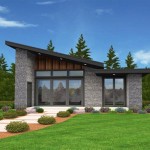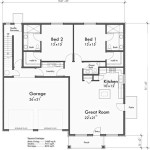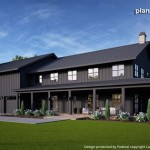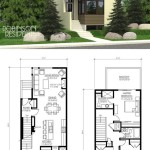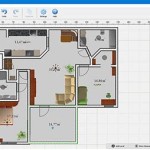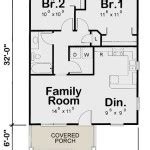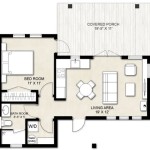Dome Home House Plans, or designs, provide a detailed blueprint for constructing a dome-shaped house. These plans offer a comprehensive guide, including architectural drawings, structural calculations, and material specifications, to assist in the construction process. Dome homes have gained popularity due to their inherent structural stability, energy efficiency, and unique aesthetics.
One notable example of a dome home is the famed “Monolithic Dome,” developed by David South in the 1970s. Monolithic Domes are air-formed concrete structures renowned for their resilience and durability, having withstood extreme weather events such as hurricanes and tornadoes. Their spherical shape maximizes structural integrity, distributes weight evenly, and reduces the risk of collapse.
In the following sections, we will delve into the various aspects of Dome Home House Plans, exploring their benefits, design considerations, and the intricate details involved in the construction of these extraordinary structures.
Dome Home House Plans offer a unique and versatile approach to residential design, providing numerous advantages. Here are eight important points to consider:
- Structural Stability
- Energy Efficiency
- Disaster Resistance
- Unique Aesthetics
- Customizable Interiors
- Sustainable Materials
- Natural Lighting
- Affordability
These attributes make Dome Home House Plans an attractive option for homeowners seeking an innovative, durable, and eco-friendly living space.
Structural Stability
Dome Home House Plans are renowned for their exceptional structural stability. The dome shape distributes weight evenly, eliminating weak points and creating a highly resistant structure. Here are four key points that contribute to the structural integrity of dome homes:
- Symmetrical Load Distribution: The spherical shape of a dome ensures that weight is distributed evenly in all directions. This eliminates the risk of collapse due to uneven loading, making dome homes highly resistant to strong winds, heavy snow, and seismic activity.
- Aerodynamic Design: The curved surface of a dome deflects wind forces, reducing the impact of wind loads. This aerodynamic design minimizes stress on the structure, preventing damage during storms and high winds.
- Monolithic Construction: Many dome homes are built using monolithic construction methods, where the entire structure is cast from a single piece of concrete. This eliminates the need for multiple load-bearing walls and creates a continuous shell that is highly resistant to cracking and structural failure.
- Redundant Support: The spherical shape of a dome provides inherent redundancy, meaning that if one section of the structure is compromised, the remaining sections can still support the load. This redundancy enhances the overall stability of the dome and reduces the risk of catastrophic failure.
The structural stability of Dome Home House Plans makes them an ideal choice for regions prone to natural disasters or extreme weather conditions. Their ability to withstand high winds, heavy snow loads, and seismic activity provides peace of mind and ensures the safety of occupants.
Energy Efficiency
Insulating Properties
The spherical shape of dome homes provides inherent insulating properties. The curved surface reduces the surface area exposed to the external environment, minimizing heat loss in winter and heat gain in summer. Additionally, the thick, monolithic shell of a dome home acts as a thermal barrier, preventing heat transfer between the interior and exterior.
Airtight Construction
Dome homes can be constructed to be highly airtight, minimizing air infiltration and exfiltration. This airtightness prevents warm air from escaping during winter and cool air from escaping during summer, reducing the need for heating and cooling systems. Advanced construction techniques, such as spray foam insulation and meticulous sealing, further enhance the airtightness of dome homes.
Passive Solar Design
The spherical shape of dome homes lends itself well to passive solar design principles. Large, south-facing windows can be strategically placed to capture sunlight during the winter months, providing natural heating. The curved surface of the dome also reflects sunlight inward, maximizing heat gain. Overhangs and shading devices can be incorporated to minimize heat gain during the summer months.
Thermal Mass
Concrete, a common material used in dome home construction, has a high thermal mass. This means that it absorbs and stores heat, releasing it gradually over time. The thermal mass of a dome home helps to regulate indoor temperatures, reducing the need for heating and cooling systems. During the day, the concrete absorbs heat from the sun, releasing it at night when temperatures drop.
Disaster Resistance
Dome Home House Plans offer exceptional disaster resistance due to their inherent structural stability and robust construction methods. Here are four key points that contribute to the disaster resistance of dome homes:
- Wind Resistance: The aerodynamic shape of a dome deflects wind forces, reducing the impact of high winds. The symmetrical load distribution and monolithic construction further enhance wind resistance, preventing structural damage and collapse. Dome homes have been proven to withstand hurricane-force winds and tornadoes.
- Seismic Resistance: The spherical shape of a dome provides inherent seismic resistance. The lack of corners and edges eliminates stress concentrations, reducing the risk of cracking and structural failure during earthquakes. Dome homes have been shown to perform well in earthquake-prone regions.
- Fire Resistance: Concrete, a common material used in dome home construction, is highly fire-resistant. The thick, monolithic shell of a dome home provides excellent protection against fire, preventing the spread of flames and providing occupants with a safe haven during a fire.
- Impact Resistance: The curved surface of a dome deflects and disperses impact forces, reducing the risk of damage from falling objects or debris. The monolithic construction of dome homes further enhances impact resistance, preventing penetration and structural collapse.
The disaster resistance of Dome Home House Plans makes them an ideal choice for regions prone to natural disasters. Their ability to withstand high winds, seismic activity, fire, and impact provides peace of mind and ensures the safety of occupants during catastrophic events.
Unique Aesthetics
Dome Home House Plans offer a distinctive and visually appealing aesthetic that sets them apart from traditional architectural styles. The spherical shape and curved lines create a harmonious and organic living space. Here are four key points that contribute to the unique aesthetics of dome homes:
- Curved Lines and Organic Forms: Dome homes embrace curved lines and organic forms, creating a visually pleasing and inviting environment. The absence of sharp corners and edges promotes a sense of flow and fluidity, fostering a connection with nature and the surrounding landscape.
- Natural Lighting: The spherical shape of dome homes allows for ample natural lighting. Large windows and skylights can be strategically placed to capture sunlight throughout the day, creating a bright and airy living space. The curved surfaces of the dome reflect and diffuse light, eliminating harsh shadows and creating a soft, ambient atmosphere.
- Variety of Textures and Materials: Dome homes can be constructed using a variety of materials, including concrete, wood, and steel. This allows for a wide range of textures and finishes, enabling homeowners to customize the appearance of their home to suit their personal style and preferences. Concrete dome homes, for example, offer a sleek and modern aesthetic, while wood dome homes exude warmth and natural beauty.
- Sculptural Presence: The spherical shape of a dome home creates a sculptural presence that is both visually striking and timeless. Dome homes stand out from their surroundings, becoming landmarks in their own right. Their unique form and flowing lines evoke a sense of wonder and admiration.
The unique aesthetics of Dome Home House Plans appeal to homeowners who seek a living space that is both visually captivating and harmonious with nature. The curved lines, natural lighting, and variety of textures create an environment that is both aesthetically pleasing and conducive to well-being.
Customizable Interiors
Flexible Floor Plans
Dome Home House Plans offer highly customizable interiors due to the inherent flexibility of the spherical shape. The absence of load-bearing walls and interior supports allows for open and flowing floor plans that can be tailored to specific needs and preferences. Homeowners can create unique layouts that maximize space, natural light, and views of the surrounding landscape.
Adaptable Spaces
The spherical shape of a dome home provides adaptable spaces that can be easily reconfigured to suit changing needs. Rooms can be added, expanded, or reconfigured without the need for major structural modifications. This adaptability makes dome homes ideal for growing families, multi-generational living, or individuals who desire a flexible and dynamic living space.
Multi-Level Designs
Dome homes can be designed with multiple levels, creating additional living space and enhancing the overall functionality of the home. Mezzanines, balconies, and lofts can be incorporated into the design, providing separate areas for sleeping, working, or entertaining. Multi-level designs add depth and visual interest to the interior, and allow for a more efficient use of space.
Unique Architectural Features
The spherical shape of a dome home lends itself to the integration of unique architectural features that enhance the aesthetic appeal and functionality of the interior. Curved walls, vaulted ceilings, and skylights are common features in dome homes, creating a sense of spaciousness and grandeur. Niches, alcoves, and built-in furniture can be seamlessly incorporated into the design, adding character and functionality to the living space.
Sustainable Materials
Dome Home House Plans embrace sustainability by incorporating environmentally friendly materials and construction practices. Here are four key points that highlight the use of sustainable materials in dome homes:
- Recycled Content: Dome homes can be constructed using recycled materials, such as recycled concrete and steel. Recycled materials reduce the environmental impact of construction by diverting waste from landfills and conserving natural resources. Additionally, using recycled materials can lower the cost of construction and promote a circular economy.
- Renewable and Natural Materials: Dome homes can incorporate renewable and natural materials, such as wood, bamboo, and straw bales. These materials are biodegradable and have a lower environmental impact compared to traditional building materials. Renewable materials also contribute to a healthier indoor environment by reducing the emission of harmful toxins.
- Energy-Efficient Materials: Dome Home House Plans often utilize energy-efficient materials, such as insulated concrete forms (ICFs). ICFs consist of interlocking blocks made of polystyrene foam that are filled with concrete. They provide excellent insulation, reducing energy consumption and lowering the carbon footprint of the home. Other energy-efficient materials include high-performance windows, solar panels, and geothermal heating systems.
- Low-VOC Materials: Dome homes can be constructed using low-VOC (volatile organic compound) materials to promote indoor air quality. VOCs are harmful chemicals that can be emitted from building materials, such as paints, adhesives, and carpets. Low-VOC materials help to create a healthier living environment and reduce the risk of respiratory problems.
The use of sustainable materials in Dome Home House Plans contributes to a reduced environmental impact, improves indoor air quality, and promotes a healthier and more sustainable living environment.
Natural Lighting
Dome Home House Plans embrace natural lighting to create bright and inviting living spaces. The spherical shape of a dome allows for ample windows and skylights to be strategically placed, capturing sunlight throughout the day. Here are four key points that highlight the natural lighting advantages of dome homes:
- Skylights and Clerestory Windows: Dome homes can incorporate skylights and clerestory windows that flood the interior with natural light. Skylights are installed on the roof, allowing sunlight to enter from above, while clerestory windows are placed high on the walls, capturing indirect sunlight. This combination provides even and diffused lighting throughout the home, reducing the need for artificial light during the day.
- Large Windows and Glass Doors: Dome Home House Plans often feature large windows and glass doors that maximize natural light. These openings allow for panoramic views of the surrounding landscape and create a strong connection between the interior and exterior. Ample glazing also allows for passive solar heating, reducing energy consumption and creating a more comfortable living environment.
- Reflective Surfaces: The curved surfaces of a dome home act as reflective surfaces, bouncing sunlight deep into the interior. This reduces the need for artificial lighting, even in areas that are not directly exposed to sunlight. The reflective surfaces also create a soft and ambient atmosphere, enhancing the overall ambiance of the home.
- Reduced Glare: The spherical shape of a dome home helps to reduce glare and harsh shadows. The curved surfaces scatter and diffuse sunlight, creating a more uniform and comfortable lighting environment. This is particularly beneficial in areas with intense sunlight, where traditional windows can cause glare and discomfort.
The abundant natural lighting in Dome Home House Plans not only reduces energy consumption but also promotes well-being. Natural light has been shown to improve mood, boost productivity, and enhance overall health. By embracing natural lighting, dome homes create a living environment that is both sustainable and conducive to a healthier lifestyle.
Affordability
Dome Home House Plans offer several advantages that contribute to their affordability:
- Material Efficiency: The spherical shape of dome homes minimizes surface area, reducing the amount of building materials required compared to traditional rectangular homes. This can lead to significant cost savings on materials, particularly for larger homes.
- Simplified Construction: Dome homes can be constructed using simple and straightforward techniques, reducing the need for specialized labor and complex construction methods. This streamlined construction process can lower labor costs and overall construction time, further contributing to affordability.
- Energy Efficiency: The inherent energy efficiency of dome homes reduces ongoing energy costs, which can translate into long-term savings. The spherical shape and thick, insulating shell minimize heat loss and gain, reducing the need for heating and cooling systems. This energy efficiency can result in lower utility bills and a smaller carbon footprint.
- Disaster Resistance: The exceptional disaster resistance of dome homes can save homeowners money in the long run. The structural stability and durability of dome homes reduce the risk of damage during natural disasters, such as hurricanes, earthquakes, and fires. This can lower the cost of insurance premiums and prevent the need for costly repairs or replacements.
While the initial cost of building a dome home may be comparable to traditional homes, the long-term savings on energy, maintenance, and insurance can make Dome Home House Plans an affordable option for many homeowners.










Related Posts

